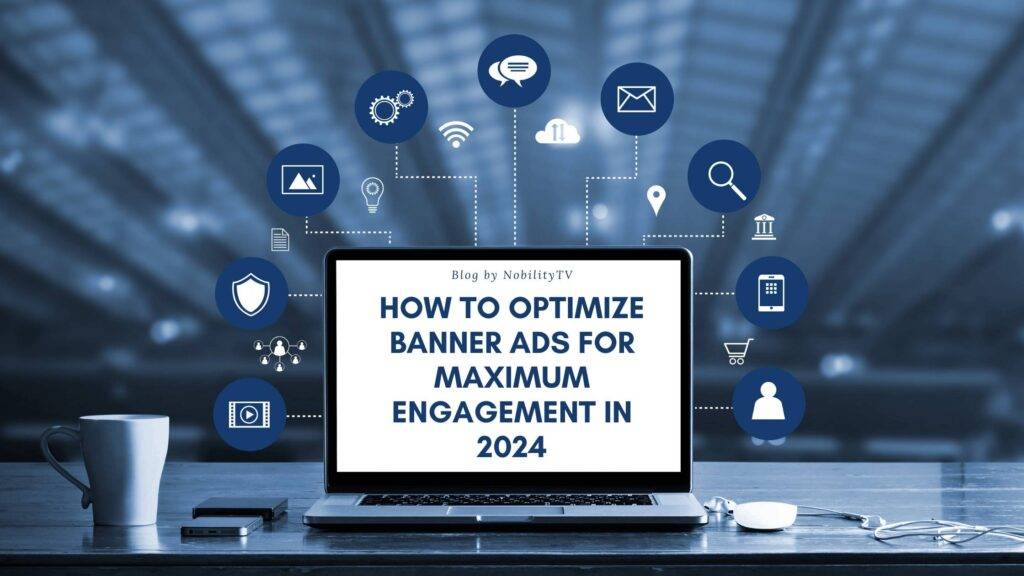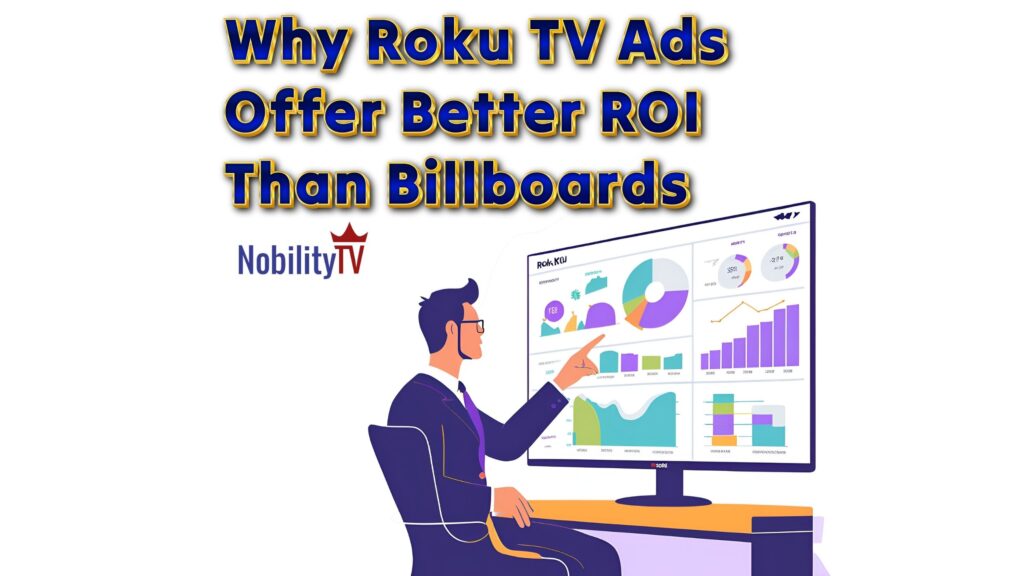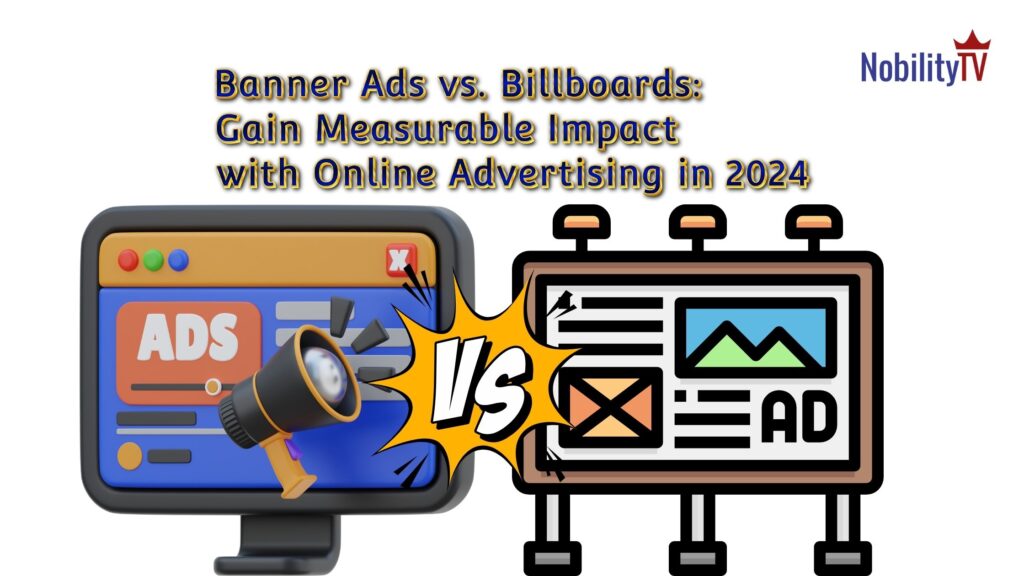
How to Optimize Banner Ads for Maximum Engagement in 2024
In an age where digital marketing is a cornerstone of business strategy, banner ads remain a vital tool for capturing user attention. Yet, the digital landscape demands constant refinement to maintain relevance and engagement. As we step into 2024, optimizing banner ads isn’t just about aesthetics and placement. It requires a deep focus on user experience, targeting accuracy, and seamless integration with evolving technologies. In this post, discover strategies and insights that ensure your banner ads not only stand out but also convert at impressive rates. Get ready to enhance your digital advertising approach and drive genuine engagement.
Understanding Banner Ads
Banner ads are the rectangular ads you see while surfing the internet. They are like digital billboards, designed to grab your attention and direct you to a website or product page. Companies use them in online advertising to boost brand awareness and drive traffic to their websites. But how exactly have they changed over the years? And what different types exist today?
The Evolution of Banner Ads
Over the years, banner ads have evolved significantly. When they first debuted in the mid-1990s, these simple static images sparked curiosity and engagement. Fast forward to 2024, and banner ads have transformed into sophisticated tools leveraging data analytics, artificial intelligence, and immersive technology.
- Personalization: Modern banner ads are often tailored to the viewer’s interests, thanks to advanced data analysis. This means more relevant ads and increased click-through rates.
- Mobile Optimization: With mobile browsing now outweighing desktop, ads are designed responsively to fit various screen sizes seamlessly.
- Interactive Elements: Interactive banner ads are increasingly popular. They aren’t just static images; some ads respond to user interactions, making advertising more engaging and less intrusive.
More information on these trends can be found on SmartyAds’ best practices.
Types of Banner Ads
There are several types of banner ads, each with its specific purpose and advantages. Understanding these can help advertisers choose the right format for their campaigns.
- Static Banner Ads: These are simple image-based ads. They’re quick to load and perfect for delivering straightforward messages.
- Animated Banner Ads: Featuring GIFs or HTML5 formats, these ads offer movement that can capture more attention than a static image.
- Responsive Banner Ads: Designed to adapt to different screen sizes, these ads ensure a consistent look across devices. They are crucial for reaching audiences on both mobile and desktop devices.
These types are just a few of the many available today. For a deeper dive into the variety, the Brafton blog offers extensive insights.
Banner ads are not just about displaying products—they’re about creating an engaging connection with potential customers. With the right approach, they can be an incredibly effective tool in your advertising strategy.
Design Principles for Effective Banner Ads
When it comes to optimizing your banner ads for maximum engagement, adhering to key design principles can make all the difference. Whether it’s the colors you choose, the fonts you use, or how you encourage users to take action, every detail plays a significant role in capturing attention and encouraging interaction. Let’s explore these elements one by one to understand how they work together to create effective ads.
Color Psychology
Colors do more than just appeal to the eyes; they evoke emotions and influence perceptions. For instance, red can stimulate excitement and urgency, which is why it is often used in clearance sales, while blue might convey trust and reliability, making it ideal for corporate offers. By understanding how different colors affect mood and behavior, you can choose a palette that aligns with your brand’s message and incites engagement.
For further insights, HubSpot provides an excellent guide on the power of color psychology in marketing. Alternatively, Color Psychology in Marketing and Branding delves into how consumer impressions are shaped through color.
 Photo by ready made
Photo by ready made
Typography and Readability
Choosing the right font is crucial for readability and brand identity. A clean, legible typeface ensures that viewers can easily read and process the information presented. Consider using sans-serif fonts like Arial or Helvetica for a modern look, while serif fonts such as Times New Roman evoke a more traditional feel.
Typography plays a pivotal role in branding. According to Giant Creative, the right font can strengthen brand recognition and create a cohesive visual identity. For a deeper dive, Evok Advertising discusses how typography influences advertising.
Imagery and Visuals
Images in banner ads should do more than just look pretty. They should enhance the message of the ad and draw the viewer’s eye. Consider using high-quality images that are relevant to your content and resonate with your target audience. Visual metaphors can simplify complex ideas, making them instantly recognizable and memorable. Investing in impactful visuals can significantly boost engagement rates.
Call-to-Action (CTA) Strategies
A compelling call-to-action (CTA) is the driving force behind user interaction. It can be the tipping point between a casual glance and a committed click. To craft an effective CTA, be clear and concise with your wording. Use action verbs like “discover,” “get,” or “start” to encourage immediate action. For instance, instead of a bland “Submit,” you might use “Get Your Free Guide Now.”
Incorporating color psychology, such as a contrasting color for your CTA button, ensures it stands out. Make your audience feel like they’re missing out if they don’t act now—tap into their emotions and create urgency.
Adopting these practices will not only make your ads more visually appealing but also functionally effective, leading to better performance and higher engagement rates.
Targeting and Audience Segmentation
Optimizing banner ads is crucial if you want to connect with the right audience and see real engagement. Understanding your audience is like having a map; it shows you where to go and how to get there. Let’s explore different ways to target and segment your audience so you can create ads that truly matter.
Demographic Targeting
Demographic targeting allows you to tailor your ads based on age, gender, and location, making your message more relevant to those you’re trying to reach. Think about it; a teenager might be more interested in gaming products, while an adult might prefer home improvement tools. By recognizing these differences, your ads can speak directly to these groups.
- Age: Assess what age group your products or services appeal to most.
- Gender: Understand any gender-specific needs your product addresses.
- Location: Use geographic data to target local markets effectively.
You can learn more about audience segmentation in targeted advertising to refine your demographic targeting strategies.
Behavioral Targeting
Behavioral targeting involves diving into the actions and habits of your audience to deliver the right message at the right time. People leave breadcrumbs of their interests through online behavior such as website visits and search queries. By piecing these breadcrumbs together, you can predict what they might like next.
- Website Visits: Track which pages users visit on your site.
- Search Patterns: Monitor the keywords they search for to understand their needs.
- Purchasing Habits: Look at what your audience buys and how often.
With these insights, you can ensure your ad content resonates well with your target viewers. For more strategies, visit best practices in behavioral targeting.
Retargeting Strategies
Retargeting is your chance to bring back those who showed interest but didn’t take the plunge. Imagine placing a reminder that gently nudges them to return to your website, similar to a friendly tap on the shoulder.
- Cart Abandonment: Target users who left items in their shopping carts.
- Previous Visitors: Recapture those who browsed but didn’t make a purchase.
- Custom Audiences: Create personalized ads for users who engaged with specific content.
By employing these tactics, you can enhance your ad’s reach and re-engagement. Discover effective retargeting ad practices for more detailed strategies.
By focusing on these targeting and segmentation strategies, you can ensure your banner ads reach the audience that matters most. Tailor your messaging, refine your approach, and watch as engagement rises with precision and intent.
Utilizing Data for Optimization
To maximize the engagement of your banner ads, it’s crucial to harness the power of data. Leveraging data enables informed decision-making, ensuring your ads are not just seen, but also resonate with your audience. By using specific techniques, you can refine your ads to perfection.
A/B Testing Techniques
One of the most effective methods to optimize banner ads is A/B testing. This technique allows you to compare two different versions of your ad to determine which one performs better. It’s like a science experiment for marketers—it shows you what works and what doesn’t. But how do you go about it?
- Choose One Variable to Test: Start by altering one element at a time, like a headline or image. This helps isolate the effect of each change.
- Run the Test: Display both versions of the ad randomly to your audience.
- Analyze Results: Determine which variation garnered more engagement or conversions.
For more detailed insights, consider reading about A/B testing techniques for display ads.
Performance Metrics to Monitor
Once you have your ads running, it’s important to track their performance using specific metrics. Keeping an eye on these will help you understand what’s driving engagement and where improvements are needed. Here are some key performance indicators (KPIs) to monitor:
- Click-Through Rate (CTR): The ratio of users who click on your ad to the number of total users who view it. Higher CTR indicates better ad appeal.
- Conversion Rate: Measures how many people who clicked your ad completed the desired action, such as signing up or making a purchase.
- Impressions: Counts how often your ad is displayed, no matter if it was clicked or not.
- Engagement Rate: Evaluates user interactions with your ad, such as likes, shares, or comments.
To gain a deeper understanding of how these metrics work, take a look at this comprehensive guide on display ad metrics and KPIs.
By using A/B testing and monitoring these metrics, you can gather valuable insights and refine your banner ads for optimal performance. Think of it like tuning a car; every detail counts towards a smoother and faster ride. The right data-driven adjustments might just be the key to propelling your ads to the next level of engagement.

Photo by Angela Roma
Emerging Technologies and Trends in 2024
In 2024, the landscape of digital advertising is rapidly evolving with dynamic shifts and groundbreaking innovations. Banner ads, once static and oft-overlooked, are transforming into vibrant, interactive experiences. These changes are not just cosmetic; they are fundamentally altering user engagement and conversion possibilities. Two key trends driving these innovations are the rise of artificial intelligence and the increasing incorporation of interactive elements.
Artificial Intelligence in Ad Optimization
Artificial intelligence (AI) is reshaping the world of ad optimization. Think of AI as a savvy mathematician, tirelessly working behind the scenes to improve ad targeting and personalization. By analyzing vast amounts of data, AI algorithms identify patterns and predict user behaviors in ways no human could match.
- Personalized Experiences: AI enables personalized ad experiences that can cater to individual preferences, ensuring users see ads relevant to them. Personalization leads to higher engagement, as users are more inclined to interact with content that feels tailor-made for them.
- Real-time Adjustments: AI can dynamically adjust ad content in real-time based on user interactions and feedback. This adaptability ensures that the ad remains appealing and pertinent, increasing the likelihood of user engagement.
- Efficient Targeting: Rather than casting a wide net, AI focuses on precision targeting, delivering ads to the right audience at the right time. This targeted approach not only improves engagement rates but also optimizes ad spend.
For more insights on how agencies utilize AI to enhance ad campaigns, check out this Forbes article on AI in advertising.
Interactive Banner Ads
Gone are the days when banner ads were static images with little more than a clickable link. Today, interactive banner ads are all about engagement, turning passive viewers into active participants.
- Dynamic Content: Interactive ads often feature dynamic content, like rotating product displays or quizzes, that captivates users’ attention. This kind of engagement goes beyond clicks, leading to memorable brand interactions.
- Gamification: By incorporating game-like elements, such as rewards and challenges, brands can create fun and engaging experiences that resonate with users. This approach not only improves engagement rates but can also foster a sense of brand loyalty.
- Shoppable Ads: These ads allow users to purchase items directly from the ad itself, reducing the steps between discovery and purchase. Simplifying the process leads to increased conversions and a smoother user experience.
For more information on the latest trends in interactive advertising, you can explore Bannerflow’s insights on interactive ads.
The integration of AI and interactive features heralds a new era of advertising where user experience is at the forefront. These technologies are not just tools but integral components of a successful ad strategy, offering more engaging and personalized experiences than ever before.
Best Practices for 2024 Banner Ads
As we step into 2024, the landscape of digital advertising continues evolving. However, some elements remain fundamental, such as understanding where to place your banner ads and knowing the right time and frequency for maximum engagement. Let’s explore some of these best practices that can help drive better outcomes for your banner ad campaigns.
Ad Placement Strategies
Where you place your banner ad can make all the difference. The right ad placement ensures your ad gets the visibility it needs while properly aligning with user experience.
- Above the Fold: Positioning your ads at the top of the web page ensures they’re one of the first things users see. This is often where attention is most concentrated.
- Sidebar or Mid-content: Ads placed in the sidebar or in the midst of content can capture attention as readers scroll, making them effective spots to consider.
- Mobile Optimization: With most web traffic coming from mobile devices, ensuring your ads look good and function well on mobile is crucial. Consider formats like in-app banners for maximum reach.
- Contextual Placements: Make sure your ads align with the content on the page. Relevancy can increase click-through rates and lead to better engagement.
For more on digital ad placement, check out this comprehensive guide.
Frequency and Timing Considerations
Timing and frequency play a vital role in how well your ads perform. It’s about getting your message in front of potential customers at the right moments.
- Avoid Overexposure: Bombarding users with the same ad multiple times can lead to ad fatigue, diminishing returns, and even negative brand perceptions. Instead, focus on balanced frequency.
- Peak Times: Tailor your ad deployments to peak times when your target demographic is most active online. This boosts the chances of engagement. For some businesses, weekends might work better than weekdays, or vice versa.
- Seasonal Relevance: Adjust your banner ad campaigns to align with seasonal trends or major events related to your industry. This tactic can capture attention and resonate more with the audience.
Balancing these aspects requires strategic thought and careful planning. For detailed insights on structuring your banner ad frequency and timing, check out this informative resource.
By focusing on these best practices, your banner ads can become more compelling and engaging in 2024. As technology evolves, staying informed and adapting your strategies will be key to keeping your brand at the forefront of digital advertising.
Read our blog
Conclusion
Optimizing banner ads for maximum engagement in 2024 demands attention to detail and adaptability. Key strategies include using compelling visuals and clear calls to action, which directly entice user interaction. Responsive and well-targeted designs ensure your ads are seen by the right audience, increasing conversion possibilities.
Implementing these tactics will position your brand for greater success. Don’t just settle for average; aim to exceed expectations by testing and refining your banner ads continuously.
Engage with the latest trends and updates to stay ahead of the curve. Experiment, analyze, and conquer the competition with dedication and creativity. Your proactive efforts will redefine your advertising success this year.
If this article is helpful, let’s chat about personalizing your digital marketing with Nobility TV.



